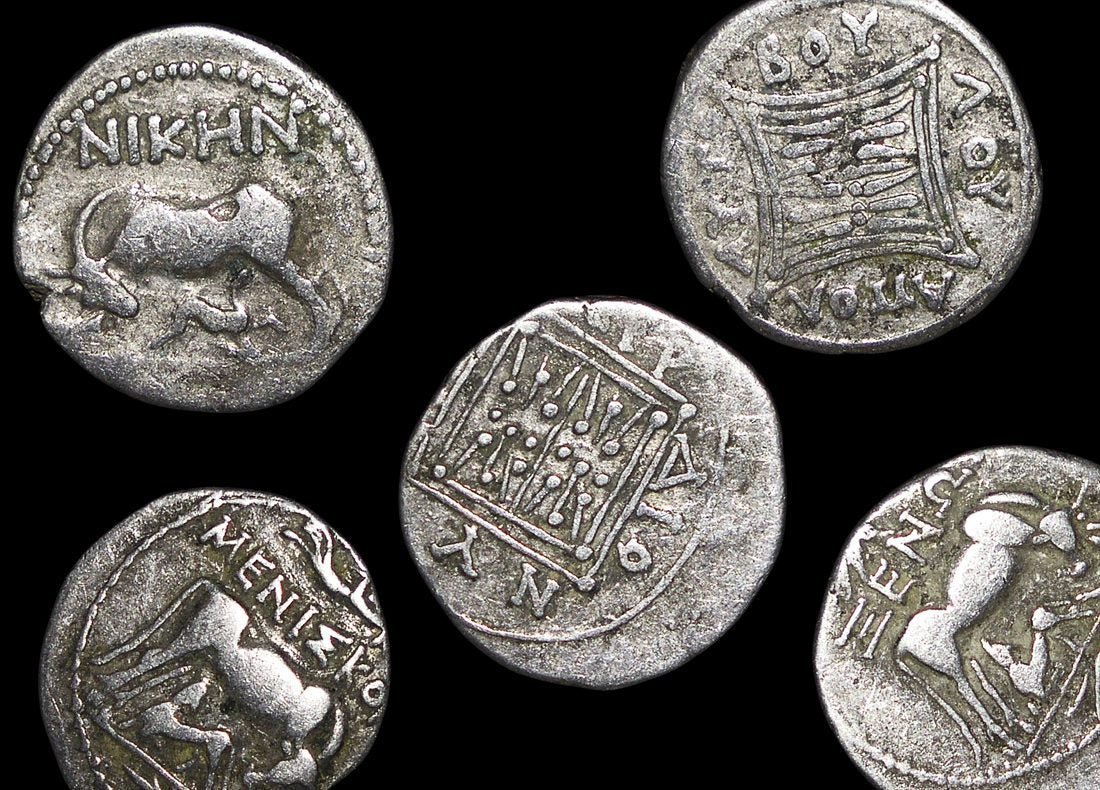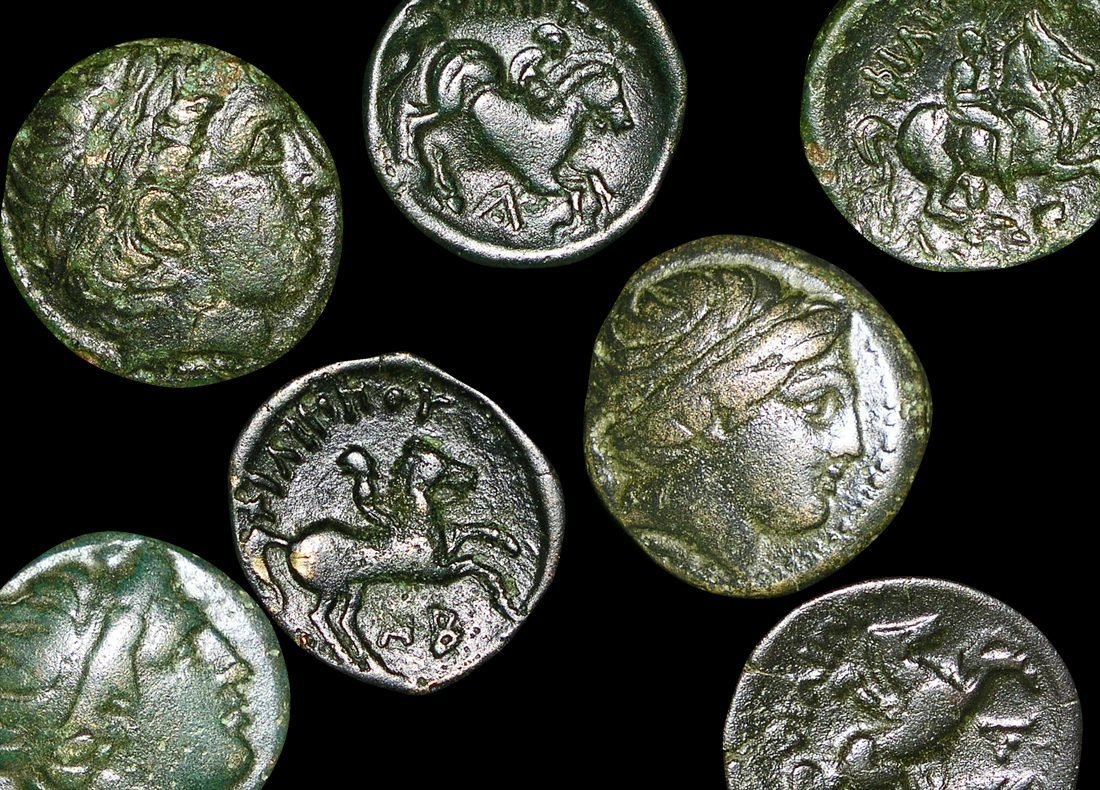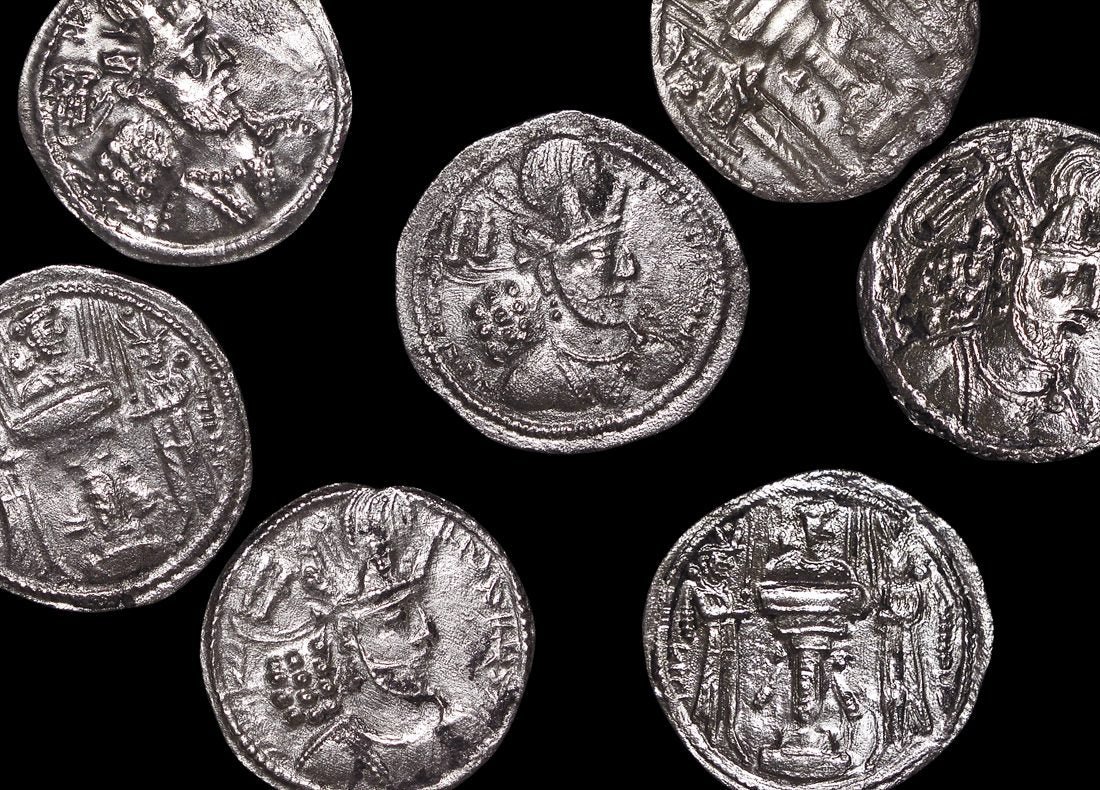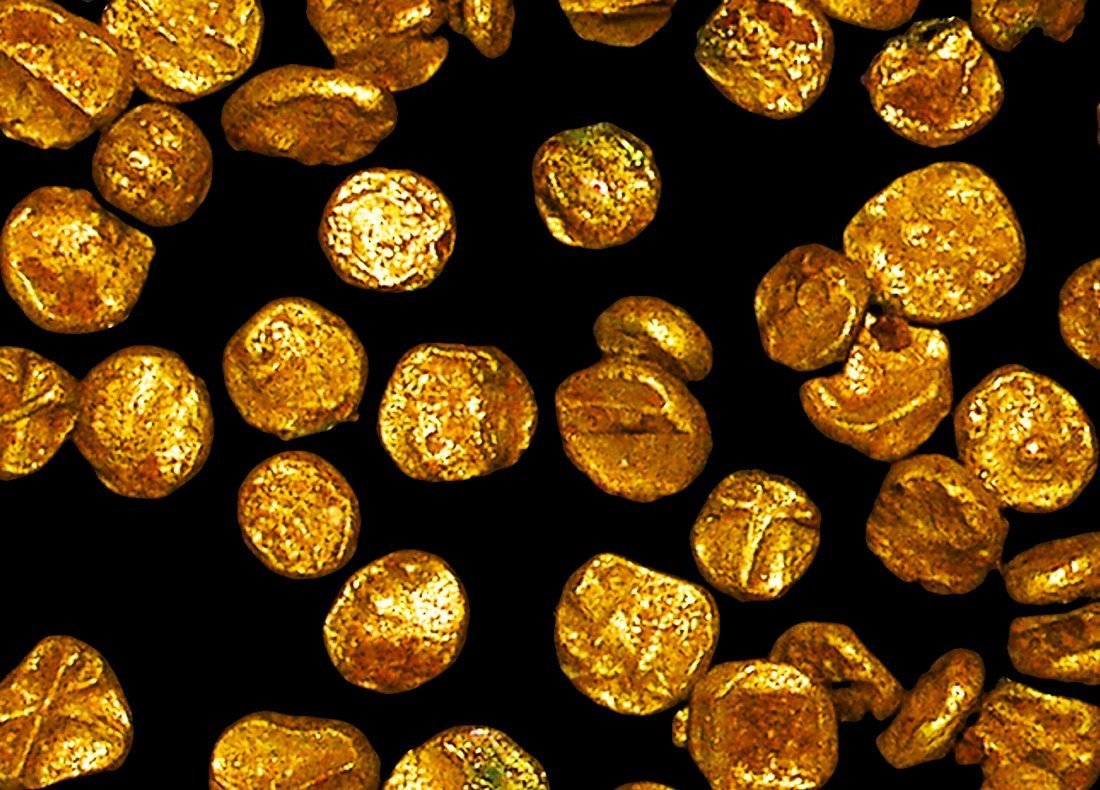 Image 1 of 1
Image 1 of 1


Title: Ancient Greek Silver Drachm from Apollonia (2,200-2,100 years ago)
This silver drachm was minted in Apollonia (near modern Fier, Albania), an important Greek colonial city on the Adriatic coast of ancient Illyria. The coin was produced during the period when Apollonia functioned as a Roman protectorate, maintaining its autonomy while benefiting from Roman military protection.
Coin Description:
Front side: Likely depicts a cow with her calf, a common design on Apollonian coinage that symbolized agricultural prosperity, or possibly features Apollo, the city's namesake deity.
Back side: Typically shows a decorative pattern known as a "stellate" or "double stellate" design—geometric star-like patterns within a square, surrounded by the city's name in Greek letters.
Technical Details:
Material: Silver
Denomination: Drachm (standard Greek silver currency unit)
Minting date/period: c. 229-100 BCE (approximately 2,200-2,100 years ago)
Condition: Varies by specimen
Historical Significance:
This coin circulated during Apollonia's golden age as a Roman protectorate, before becoming a formal province in 148 BCE. The city flourished as a center of trade between Italy and the Balkan interior, and was renowned for its philosophical school, which the future emperor Augustus attended. The alliance with Rome brought prosperity and protection, but the city's fortunes eventually declined when an earthquake diverted the river Aous, silting up the harbor and creating malarial swamps that drove away inhabitants. The once-thriving city was lost until archaeological rediscovery in the 18th century.
This silver drachm was minted in Apollonia (near modern Fier, Albania), an important Greek colonial city on the Adriatic coast of ancient Illyria. The coin was produced during the period when Apollonia functioned as a Roman protectorate, maintaining its autonomy while benefiting from Roman military protection.
Coin Description:
Front side: Likely depicts a cow with her calf, a common design on Apollonian coinage that symbolized agricultural prosperity, or possibly features Apollo, the city's namesake deity.
Back side: Typically shows a decorative pattern known as a "stellate" or "double stellate" design—geometric star-like patterns within a square, surrounded by the city's name in Greek letters.
Technical Details:
Material: Silver
Denomination: Drachm (standard Greek silver currency unit)
Minting date/period: c. 229-100 BCE (approximately 2,200-2,100 years ago)
Condition: Varies by specimen
Historical Significance:
This coin circulated during Apollonia's golden age as a Roman protectorate, before becoming a formal province in 148 BCE. The city flourished as a center of trade between Italy and the Balkan interior, and was renowned for its philosophical school, which the future emperor Augustus attended. The alliance with Rome brought prosperity and protection, but the city's fortunes eventually declined when an earthquake diverted the river Aous, silting up the harbor and creating malarial swamps that drove away inhabitants. The once-thriving city was lost until archaeological rediscovery in the 18th century.






